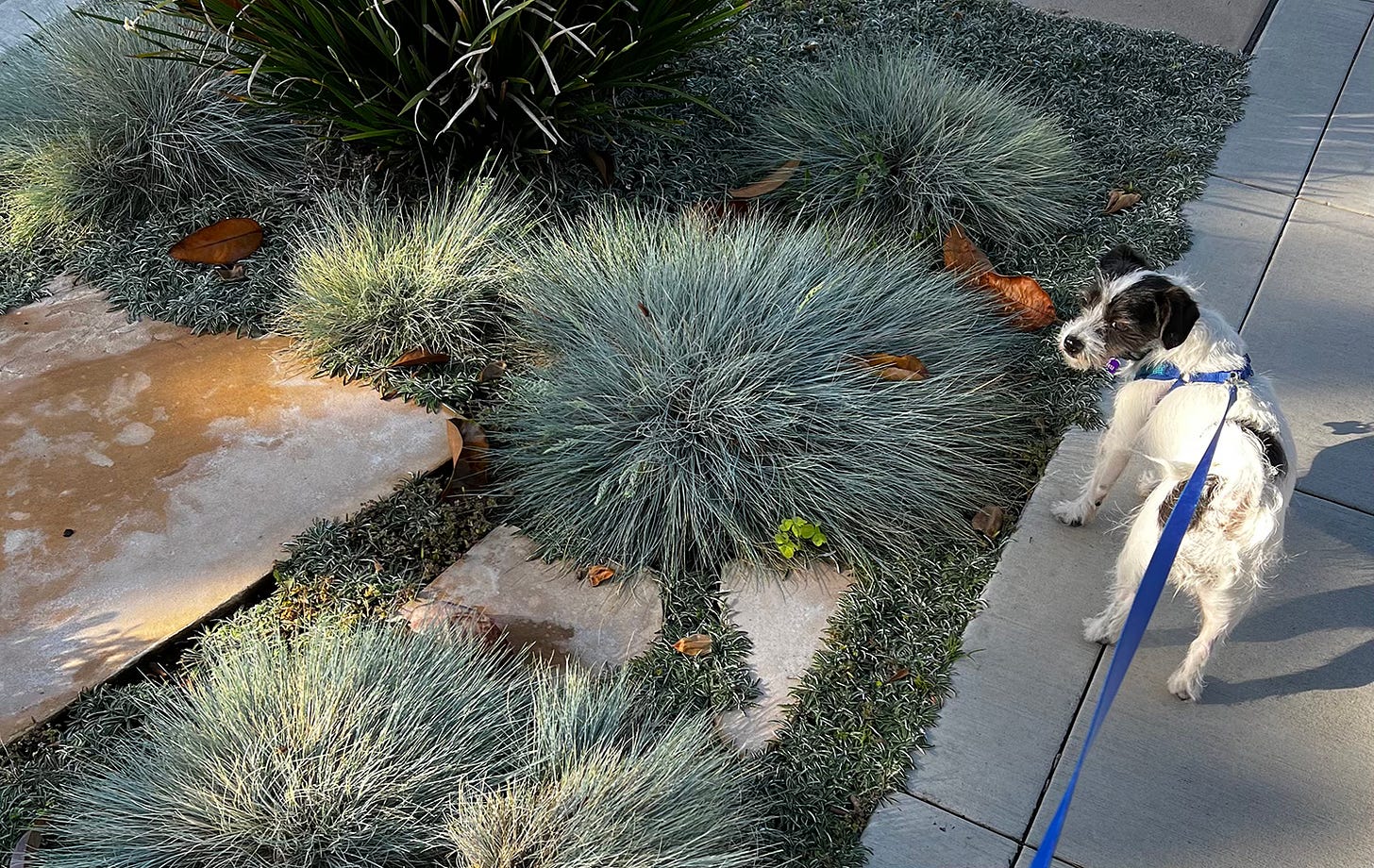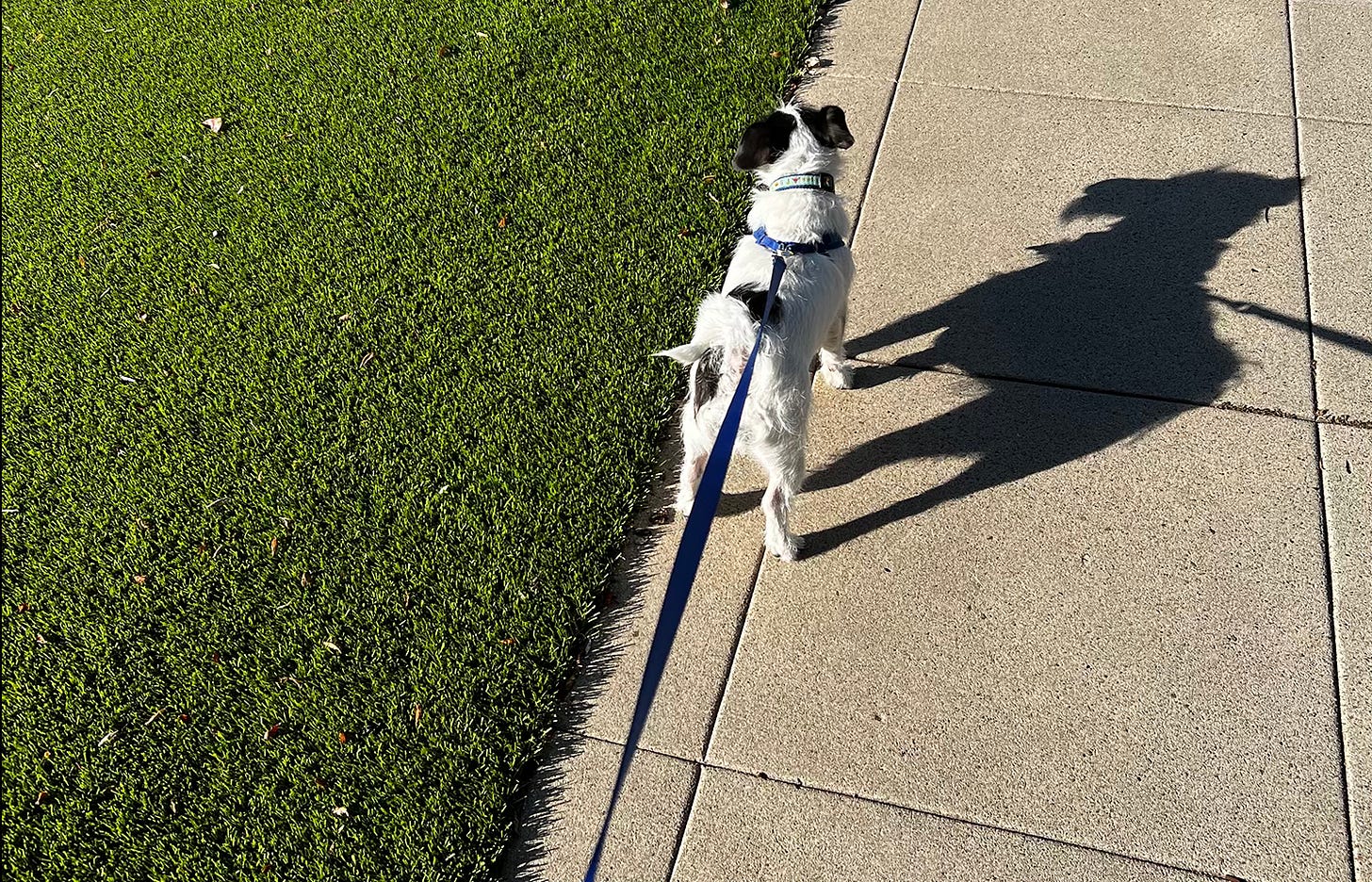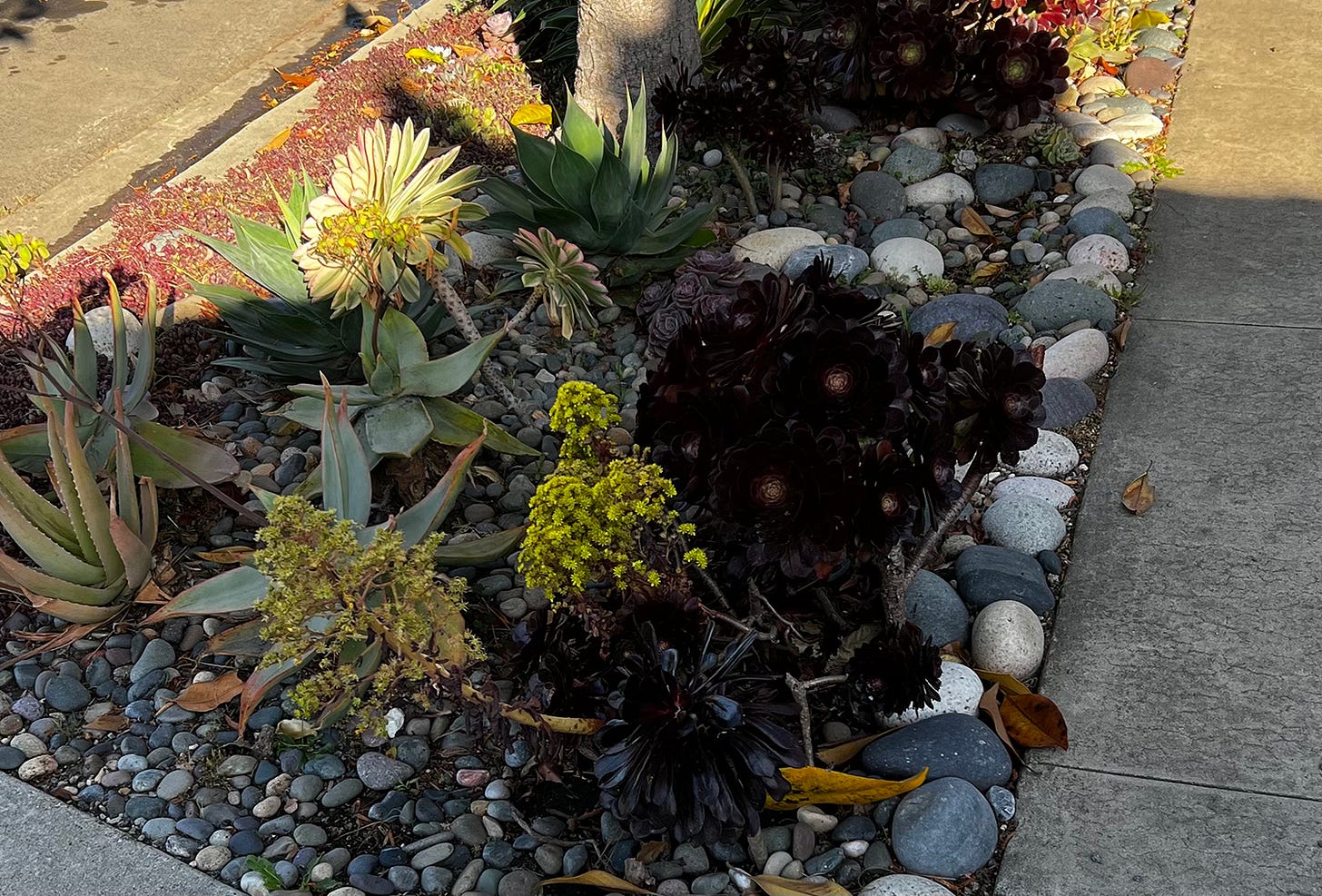Get real: replacing lawns with plants instead of artificial turf helps environment
By Leslie Crawford

About 25 years ago my husband and I made the decision to remove the lawn from our yard. The kids were older and weren’t using it much. It was hard to justify the amount of time, work and water it took to keep the lawn presentable. It simply didn’t make sense. We haven’t had a lawn since.
We replaced the grass with a big garden that better fit our lifestyle. It was fun for us to see how our yard came alive with tomatoes, flowers, butterflies and other beneficial insects. It became a healthy space that was environmentally friendly.
Grass isn’t all bad. It is permeable, and transpiration through the blades helps keep ambient temperatures regulated. Could you imagine Spreckels Park without grass?
Although the 3½-year drought in California is over, with less that 1 percent of the state in drought conditions, the state can quickly turn drier than usual due to fluctuating weather patterns because of climate change. The years-long drought heightened awareness that we need to be smarter about our water use.
With a big push to remove lawns, artificial turf has been a popular choice for people with good intentions looking for low maintenance and low water use.
Synthetic turf is commonplace on sport fields as it stands up to the rigor of heavy use and requires little maintenance. But there are quite a few downsides to the plastic substance.
Surface temperatures on artificial turf during hot weather can be very high, to the point of burning skin and causing heat stroke. Studies have shown that the temperature of artificial turf on a hot day can be 80 degrees hotter than the surrounding air temperature. Many cities have issued official statements about dangers of high heat generated off the fake grass. Sports organizations have created standards for play on synthetic turf to avoid injury.
Fields must be watered before and sometimes during sporting events to keep the turf temperature at a safe level for athletes.

Artificial turf is made of polyethylene, polypropylene or nylon. All these materials make their way into the soil in the form of microplastics. Soil underneath turf is “dead” because it has been compacted to install the turf and then becomes lifeless underneath the plastic carpet that bakes the ground. Synthetic grass creates a dead zone that will take a lot of time and soil amendments to bring back to life.
To a degree, artificial turf is permeable, but it drains more slowly than organic ground coverings. This can lead to flooding because excess runoff can’t drain through the mesh quickly enough, which also alters the natural effect of groundwater replenishment.
Although artificial turf is advertised as low maintenance, it still needs to be maintained. Weeds will still grow through the tight mesh and are typically sprayed with poison to kill them. The defoliant then goes into the groundwater and in some cases out into the ocean. Bacteria from animal waste and other pathogens sit on the top until they are washed off. Natural groundcovers break down these harmful bacteria with soil microbes.
“Given the health and environmental impacts of plastic grass, we need to reconsider its use in Coronado” said Amy Steward, president of the local environmental group Emerald Keepers. “Say no to plastic grass. It affects all the ecosystems in Coronado.”
The lifespan of artificial turf is 10 to 20 years. Many companies claim that the turf is recycled at the end of its life, but the reality is that most of it ends up in the landfill. Because it is made of multiple materials, it requires special handling to deconstruct and recycle. Most recycling facilities don’t have the infrastructure to take this on. There are no facilities in California equipped to handle this type of multi-step recycling.

There are better ways to landscape that benefit our environment and our health.
Water-wise landscaping is a catch-all phrase that includes everything from yards with cactus and hardy succulents to native plants and other drought-tolerant plantings, plus hardscaping with material such as bricks, rocks, decomposed granite or gravel.
Planting natives and drought-tolerant varieties from similar climate zones is an optimal way to fill in your garden, providing consistent blooming throughout the year. San Diego County Water Authority has a handy list of “Nifty Fifty” non-invasive, water-wise plants on their website. Sages and lavenders are easy to find and are great pollinator-friendly choices.
Coronado has a large number of native plants. For a list, go to the California Native Plant Society’s CalScape website.
Local nurseries, such as Walter Anderson Nurseries and City Farmers Nursery, stock natives suited for our climate and location. Before you go shopping, identify plants appropriate to your location. CalFlora, CalScape and the California Native Plant Society San Diego are three great resources to help you choose what is suited for your yard.
If you plan to use hardscaping materials, there are lots of good options to choose from. Bricks laid in sand, decomposed granite and pea gravel are all good choices that are permeable, tough and more organic than artificial turf. For areas with less foot traffic, planting a groundcover helps regulate the temperature of the yard. Dymondia is a popular choice.
Desertification, the process of when land becomes dry and barren, is a manmade phenomenon not caused by drought. Vegetation decreases and eventually disappears. Every small house that is replaced with a giant structure and every lawn that is replaced with artificial turf move us toward desertification.
Thinking beyond a quick and easy solution opens up possibilities. Reimaging your yard doesn’t have to be a huge project. Even a small strip of eco-friendly landscaping makes a difference in moving the needle in an environmentally friendly direction.
Leslie Crawford is editor and co-founder of Coronado 365 and a UCCE-certified Master Gardener.





Thank you for all of the resource information and links!